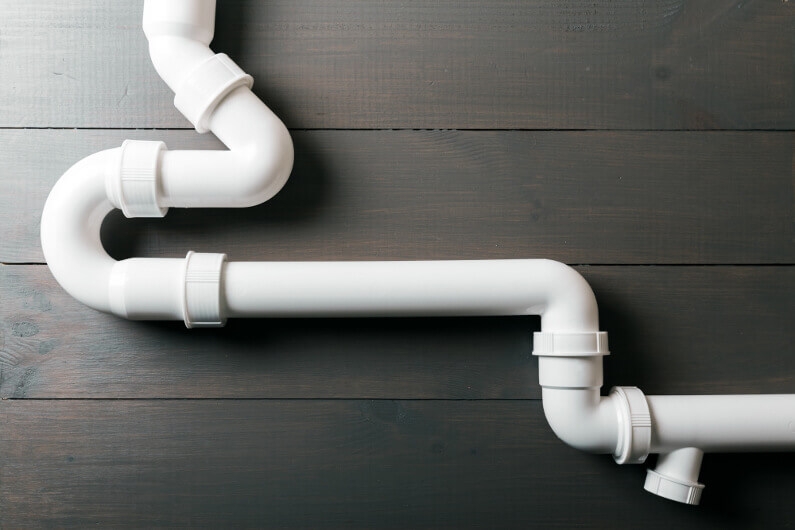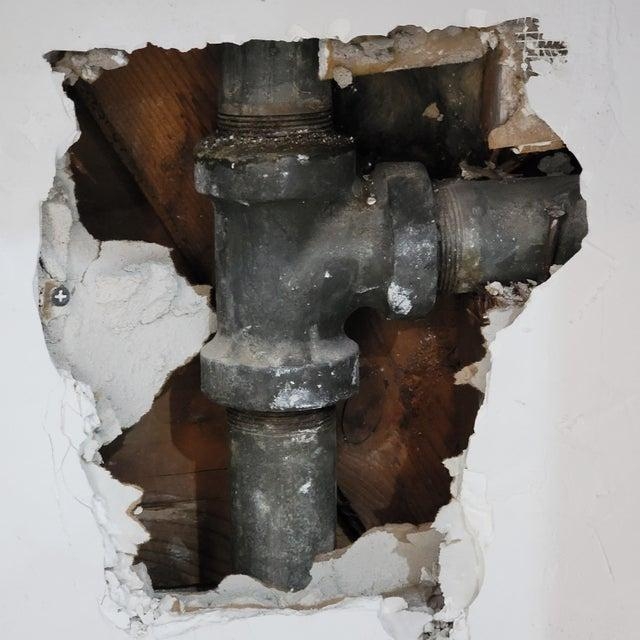Why does drain snake keeps going up vent?
Have you ever tried to unclog a drain using a snake, only for it to keep going up the vent instead of clearing the blockage? It can be frustrating and leave you wondering why it’s happening.
A drain snake, also known as a plumber’s snake or auger, is a tool used to remove clogs from pipes and drains. It’s a long, flexible cable that can be inserted into a drain and rotated to break up and remove blockages. However, sometimes the snake can end up going up the vent instead of clearing the clog.
If you’ve experienced this problem, you’re not alone. There are several reasons why a drain snake may keep going up the vent, and understanding these reasons can help you avoid the issue in the future. In this article, we’ll explore the possible causes of this common problem and provide solutions to help you successfully unclog your drain.
What is a drain snake?
A drain snake, also known as a plumbing snake or drain auger, is a tool used by professional plumbers and homeowners alike to clear clogs from drain lines and pipes. It is a long, flexible wire coil with a sharp, pointed tip that can be threaded through pipes to break up and remove blockages.

There are several types of drain snakes available, each designed for specific plumbing issues. For example, a toilet auger is specifically designed to clear clogs in toilet bowls, while a power auger uses a motor to break through tougher clogs in larger drain pipes.
Using a drain snake can be a simple and effective solution for slow drains and clogs caused by hair, soap scum, food particles, and other debris. However, it is important to use the appropriate type of drain snake for the job and to follow proper safety precautions to avoid damaging pipes or injuring oneself.
If a drain snake is unable to clear a blockage or if the issues persist, it may be necessary to call in a licensed plumber to diagnose and fix the problem. In some cases, the issue may be related to a larger plumbing problem such as damaged sewer pipes or bad odors caused by sewer gas.
What is a plumbing vent pipe?
A plumbing vent pipe plays a crucial role in the functioning of a plumbing system. It is responsible for equalizing pressure within the plumbing system and removing potentially harmful gases and odors from the sewer system.
Essentially, a plumbing vent pipe is a vertical pipe that extends out of the roof of a building. It connects to the plumbing system below and allows for air to enter the system and equalize pressure. Without a plumbing vent pipe, drains and toilets would become sluggish and may even emit foul smells due to the buildup of sewer gas.
The plumbing vent pipe is usually made of PVC or other durable materials that can withstand exposure to the elements. It is typically installed during the construction of a building and must meet certain building codes and regulations to ensure safety and functionality.
It is important to remember that a plumbing vent pipe should never be blocked or covered, as this can lead to serious plumbing issues and even health hazards due to the buildup of toxic gases. In addition, if a plumbing vent pipe becomes damaged, it should be promptly repaired or replaced to maintain the integrity of the plumbing system.
How Does The Drain Snake Go Up the Vent Pipe?
Have you ever wondered how a drain snake is able to effectively clear a clog that is located higher up in your plumbing system? The answer lies in the vent pipe that extends from the drainage system of your home or building.
When a drain snake is used to clear a clog that is located higher up in the system, it is often necessary to insert the snake into the vent pipe. This may sound counterintuitive, as we typically associate the vent pipe with releasing air rather than taking in foreign objects.
However, the vent pipe serves a crucial role in the plumbing system. It is responsible for equalizing the pressure within the system and allowing air to flow freely. If a clog develops in the drainage pipes, it can disrupt this pressure and cause slow drains or even backups and bad odors.
By inserting the drain snake into the vent pipe, the professional plumber is able to push it down into the drain lines, through the obstruction, and out into the main sewer. The snake’s flexible design allows it to navigate through even the most complex plumbing systems, allowing it to reach clogs that may be far from the drain or sewer line.
It is worth noting that different types of drain snakes may be necessary depending on the type of clog and the specific plumbing set up. For example, a sink clog may be best cleared with a plumbing snake specifically designed for smaller pipes, while a larger clog in a sewer line may require the use of a power auger.
Additionally, it is important to only trust licensed plumbers with this type of maintenance. Attempting to clear a clog on your own with a drain snake can exacerbate the problem and potentially damage your plumbing system.
Factors That Affect the Movement of The Drain Snake
The drain snake is known as a handy tool to have when tackling tough clogs in plumbing systems. However, it’s important to remember that not all drain snakes are created equal and that several factors can significantly impact their movement. Here are some of the factors that affect the movement of the drain snake:
1. Type of Drain Snake
There are different types of drain snakes available on the market that differ in their design and capability. For instance, there are hand-cranked drain snakes, motor-powered snakes, and auger snakes. The type of drain snake being used can have a significant effect on its movement.
2. Length of the Snake
The length of the snake is another significant factor that influences its movement. Longer snakes provide more extended reach, making it easier to navigate through tricky pipes. However, longer snakes can also become more challenging to control, and improper use can cause damage to the plumbing system.
3. Obstructions in the Pipe
The type of obstruction causing the clog can also have an effect on how the drain snake moves. Hair clogs, for instance, tend to twist and wrap around the snake as it moves through the pipe, making it harder to dislodge. On the other hand, solid objects like toys or plastic bags can become stuck on the snake, preventing it from moving any further.
4. Type of Pipe Material
The material used to create the pipes can also influence the drain snake’s movement. Different materials can interact with the snake differently, affecting its ability to navigate through the insides of the pipe. For instance, plastic pipes are more flexible, making it easier for the snake to maneuver, whereas steel pipes are more rigid and challenging to work with.
5. Blockage Severity
The level of blockage severity is another crucial factor that can affect the drain snake’s effectiveness. Severe blockages may require multiple attempts to clear completely, and using the wrong type of snake can make matters worse. This is why it’s crucial to identify the clog’s source and determine the appropriate snake to use.
Common Solutions to Prevent Your Drain Snake From Going Up the Vent Pipe
If you’ve ever used a drain snake to clear a clogged drain, you may have encountered the frustration of the snake traveling up the vent pipe instead of reaching the clog. While this is a common issue, there are simple solutions to avoid it altogether. Here are some of the most common solutions to prevent your drain snake from going up the vent pipe:
1. Use the Right Type and Length of Snake
One of the most common reasons for a snake to travel up the vent pipe is using the wrong type of snake. Different types of snakes are designed for specific types of clogs and drains. For instance, a manual drain snake is ideal for small clogs in sinks and tubs, while a motorized snake is intended for larger clogs in sewer lines.
Additionally, the length of the snake should match the length of the drain to avoid it traveling up the vent pipe.

2. Identify the Clog
Before even attempting to use a drain snake, it’s important to identify the source of the clog. This can prevent unnecessary damage to the drain pipe or sewer line. For instance, if the clog originates from the vent pipe, then using a drain snake at the bottom of the drain will only travel it farther up the pipe. Identifying the clog beforehand can also help determine the best type and length of snake to use.
3. Use a Plumber’s Helper
If the drain snake fails to remove the clog, use a plumber’s helper, also known as a plunger. A plunger creates a vacuum effect that dislodges the clog and pushes it towards the drain. Plungers work best on shallow drains like sinks and tubs.
4. Clear the Vent Pipe
If you suspect that the clog is originating from the vent pipe, clear it first before using a drain snake. The vent pipe is responsible for removing sewer gas and allowing air to flow through the plumbing system. A clogged vent can cause foul odors, slow drains or sewer backups. Use a plumbing vent pipe snake to clear any obstructions in the vent pipe, which can prevent the drain snake from traveling up it.
5. Hire a Professional Plumber
When all else fails, it’s best to turn to a professional plumber. A licensed plumber has the expertise, experience and tools to remove stubborn clogs and prevent damage to the plumbing system. Additionally, they can identify underlying plumbing issues that may be causing frequent clogs. A professional plumber is also trained to handle all types of plumbing materials and systems.
Meet Lila Robinson, an expert in the world of plumbing with a talent for delivering valuable insights and captivating articles on an array of plumbing topics. With years of experience handling complicated plumbing issues, Lila has become a go-to resource for homeowners and businesses alike.
Packing vast knowledge in plumbing tools and science, Lila creates a sense of community on her blog and social media accounts, engaging with readers from all walks of life. Her writing style is authentic, unique, and engaging, and she has an exceptional ability to break complex concepts into understandable ideas.
If you have encountered a plumbing issue, chances are Lila Robinson has conquered it. Her articles uncover the underlying problems behind some of the most unexpected plumbing problems, from tankless water heater error codes to drain snakes in vents.
Whether you’re a beginner or an experienced plumber, Lila Robinson’s blog has something for you. Follow her social media accounts to keep up-to-date with the latest posts and join the conversation.